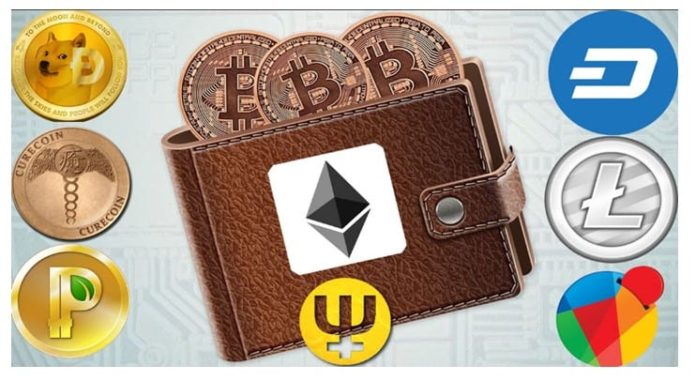Reliable and affordable e-wallet – the prerequisite for successful cryptocurrency work with bitcoin, Ethereum, Monero, and others. How to choose the best European crypto wallet (online, desktop and smartphone, hardware, and paper)?
Table of Contents
Various types of cryptocurrency wallets
If you choose to work with any cryptocurrency, whether buying or selling, mining, or using a tap, you will need a wallet to receive or transfer e-currency. There are several options available for all forms of digital wallets, of which there are five available today:
- Electronic software that you may download and install on your computer
- Applications for smartphones
- Hardware
- On paper, an electronic wallet
- Cryptocurrencies issued electronically
These wallets are made on financial websites, such as cryptocurrency exchanges, exchanges, and other portals. Activating your wallet is comparable to creating an email account; it often takes no more than 5-10 minutes and does not need the application to be installed on a computer.
Cryptocurrency wallets for PC installation
This program may be downloaded and installed from a public website (hereinafter – PC). These applications are regarded as being more dependable and user-friendly than their internet counterparts.
On the market, there are two varieties of desktop wallets: “thick” and “thin”. The first is the complete version of the application, which includes all available capabilities, including the ability to mine. However, such alternatives need a sufficient amount of disk space (up to 200 GB), as well as prolonged operating durations. While shortened versions provide faster transaction processing, they have a more restricted feature set.
Versions for mobile devices
All of the most prominent cryptocurrencies have versions available not just for personal computers, but also for mobile devices. After all, many individuals on our globe spend more time on their phones than on computers, a fact that electronic wallet manufacturers take into consideration. These concepts have many of the same advantages and disadvantages as their desktop equivalents. Applications may be downloaded via AppStore or GooglePlay.
Cryptocurrency hardware
This is the most secure method of keeping digital money, since access keys are produced locally and are not transferred over the Internet, but are saved on a particular token (flash drive). Additionally, secured chips, PINs, and mnemonics are employed to defend against hackers and viruses and to confirm transactions. Wallets from Trezor, Digital Box, Cool Wallet, Ledger, and KeepKey are the most dependable. This solution costs between $50 and $100 US dollars.
Paper wallets
Another method of storing digital money that is more secure is to use a crypto wallet on paper – paper the size of a banknote that has a printed public and private key. Such media will be far less expensive than the hardware wallet.
Wallet for Bitcoin
Because bitcoin is a market pioneer and the most widely used digital money in the world, transactions with it are enabled by the greatest variety of wallet kinds.
How to retrieve a lost or stolen electronic cryptocurrency wallet?
If you have difficulty accessing the cryptocurrency, restoring it will be incredibly tough. After all, all wallets provide the highest level of security against hackers and do not save copies of user credentials. Therefore, take care not to lose passwords or permission files.
However, if you have forgotten your digital password, you may attempt to recover it using specialized software such as Python and the libraries Pyethereum and Pyethrecovery. However, not everyone will be able to do this operation due to its programming requirements.
If you’ve deleted the digital key or have a “flying” hard drive/flash drive, you may contact the wallet’s or cryptocurrency’s support. Even better, keep a backup file on another media.
Read more interesting and informative information on the Trastra blog.




